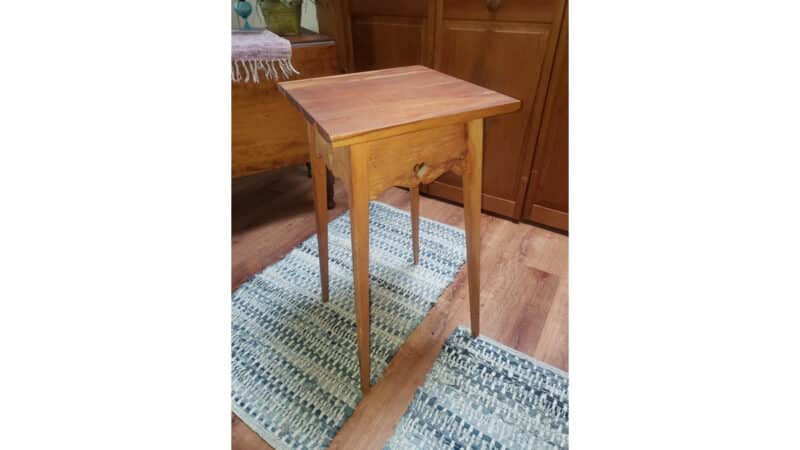by Robert P. Barsanti
I have been vexed by a closet. Inside, on the floor, drifts of clothes, papers, hats, swim suits, and about fifty shoes in one shape or another. On the walls, on various shelves, are vases, plates, platters, and card board boxes with specific tools that we no longer need. I am not sure if the automatic bubble machine is strictly necessary at this stage of my life
But those objects tax me, they vex me. All of these items have an emotional interest that has compounded year over year. Snow shoes that fit a ten-year-old may not be necessary on a twenty-one-year-old’s feet. Especially when you consider the low likelihood of snow out here in the best of modern winters.
Most of these objects have been marinated in history. To touch one of the totems is to be summoned into another time when snow boots were necessary and the air was filled with soap bubbles. To toss out the bubble machine, or to even send it to a new home at the Hospital Thrift Shop, is to somehow erase the Lawrence Welk birthday parties of the boys’ youth. Now stung, I put it back on a shelf.
Like many, I have been hurt by the slow erosion of time. Somehow, in the transition my father made from house to apartment to grave, almost all of the family Christmas ornaments were ground into dust. We were able to save his desiccated packets of Minestrone, the half eaten Toblerone chocolate bars, and the cut glass “hard” candies. But all of the ornaments that survived our tempestuous childhood have disappeared into the wind and tide. As I have gotten older and my memory has become overstuffed and indolent, I rely more and more on the totems for recall. Which is why I can’t seem to send out the small knit ski hats to the Take It Or Leave It.
Recently, I waited for a taco with a former student of mine from the days of Noriega, Oliver North, and Bel Biv Devoe. His life had not been easy; he had drifted away from Nantucket, found some rocks to cling to on the other side of the country and now was finally able to stand. In the meantime, his mother had been moved into the Island Home for her last stay. He returned for her and to finally empty out the storage shed. Cursed with an airline ticket, he had to abandon almost all of the totems of his childhood and only return with anything he could stuff in his pockets. Of all of the things he lamented sending to the Hospital Thrift Shop, a small, handmade, bed side table remained in the front closet of his mind.
During his high school years, when he bounced against the walls of math, history, and English classes, he found himself settled into wood shop. He was not alone. All sorts of students, most of them male, found their focus with a hammer in their hands and not a pencil. For all of these boys, the final project was a small 30” high table, with a drawer, and a 20”x20” top. The table required at least as much energy and focus as a performance of Midsummer Night’s Dream or the proofs of Ptolemy.
Like most engaging educational challenges, grades are secondary to time and frustration. If you did the math wrong on the splayed legs, they would wobble and collapse into a puddle of wasted time, energy, and sawdust. Each stage of completion required humility and collaboration. You had to get over your bad self and go see how the freshman field hockey player had solved the problem of the drawer. Even when you got the big things right, you needed to sand, you needed to sweep up, and you needed to figure out how you had screwed up. Everyone in the class could see how you were doing. Their eyes did the work of the final exam.
The student knew that they could walk into the homes of island-born carpenters and they would find an earlier version of that same table. Even now, one of these tables holds up Mom’s reading lamp, the dentist’s magazine collection, or a rusting toolbox in the basement. To enter the brotherhood of builders, to be welcomed by the accomplished and the artisanal, you needed to make this table.
Now my old student had to get rid of it. Someone who had not spent hours sanding it by hand would put a dying spider plant on it. Then, in a few years, it would be in the dump. Like dozens of others.
The exams don’t matter. Be they wooden or paper, they measure what has been done, not what will happen. To finish the table was to master yourself— that is what my student said. You had to sand it. You had to stain it. You had to make it so precise that it didn’t wobble. You had to be patient and persistent. In the years of drift, those lessons did not bear fruit. But when he found himself staggering upright on the rocks, the gifts of the table held him strong.
We don’t need the totems (or at least all of them). The good they did is embedded in our everyday practice. Both the bubble machine and the table live on, in the minds and the hands of those who used them.
All successful students make a table. They write a thesis, they sing in a concert, they complete a floor routine, they stand up and are counted. If we, the parents, the teachers, the community, are successful, they come to the workplace young, patient, and strong. Once they do, the artifact does not matter. It has become internal. We spend every day sanding and sweeping, one way or another.



